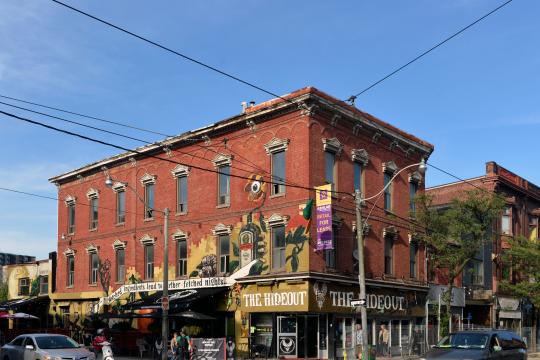
A new report co-authored by a UTSC Sociologist sets out the challenges facing music venues in Ontario and proposes innovative new models that might help overcome them.
Professor Dan Silver and Jonathan Bunce of Wavelength Music note in their report Reimagining Music Venues the industry witnessed more venue closures than openings in recent years, accompanied by escalating ticket prices, fewer shows and insufficient compensation for artists. In addition, growing operational costs presented a significant challenge for venues. COVID also exacerbated these problems.
“In the traditional model, venues will be paid from sales at the bar, and then the musicians will take the ticket sales, and that's the kind of equilibrium we've been in for decades,” says Prof. Silver. “But this leaves a lot of these venues operating right on the razor's edge.”
It’s different for larger venues, who can charge for tickets and fees as well as drinks, notes Prof. Silver, but smaller venues remain threatened, especially with increasingly high rent, notably in the city of Toronto.
“Prior to COVID, there was already a pretty significant decline in the total shows and in the total number of venues in Ontario, but when you zoom in on it, the decline was really most pronounced in Toronto,” explains Prof. Silver. “You didn't see the same level of decline and in most other cities. We looked at all sorts of different variables available from other research that would predict those declines, based on the features of a neighborhood. We looked at income, education, demographics, all the standard variables, but there's no major pattern except for a growth in rent in Toronto.”
Furthermore, Prof. Silver notes that the rent increases were most acute in the west end of the city, where the highest concentration of music venues are traditionally found. “All those conditions together were already causing problems for music venues,” concludes Prof. Silver, “and then COVID just pushed a set of them over the edge.”
The report proposes a number of different alternatives to the traditional venue model. These include mobile stages, as well as concerts held in public places like churches, galleries, libraries and parking lots. The creation of multidisciplinary arts centres would partner music presenters with arts groups working in other disciplines such as theatre and dance, or music centres which would cluster music-specific uses, such as a venues, rehearsal space, and recording studios. Finally, members of a community could work together to start a non-profit trust, which can then sell or lease space to community members at affordable rates.
“We go through a few different options in the report and one thing we wanted to note is while these venue models are kind of unusual in Ontario, they're not unusual elsewhere in the world,” says Prof. Silver. “There are people trying these out in other places, and we need to look to these examples as we experiment with what works for Ontario.”
The report makes further policy recommendations, including appointing municipal music officers, changing zoning laws to allow for performances to take place in a wider range of locations, increasing grant funding and creating a new provincial charitable organization.